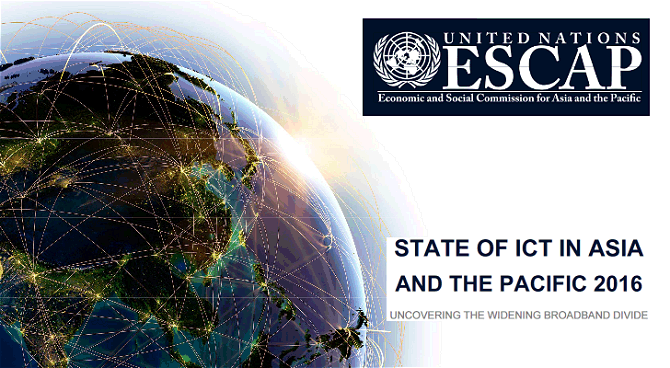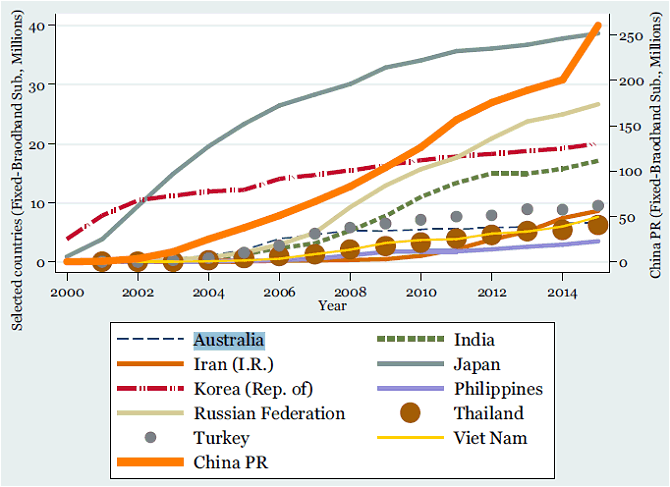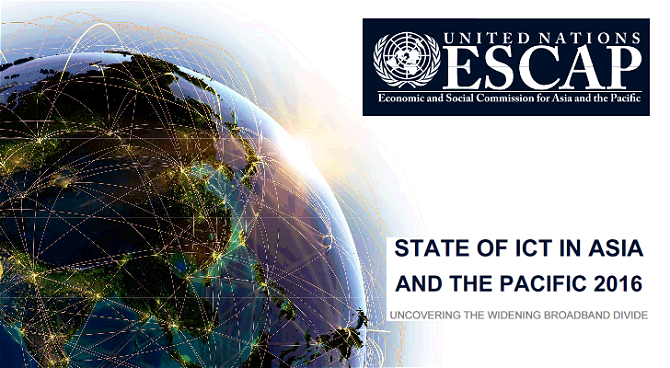A new report from the UN states warns the gap in fixed broadband access between advanced and developing economies is widening - and the trend could continue unless positive policy action is taken.
The report, from the United Nations Economic and Social Commission for Asia and the Pacific (ESCAP), states broadband capabilities and access in the Asia Pacific are highly concentrated in East and North-East Asia.

Based on data from last year, the report indicates nearly three-quarters of total fixed broadband subscriptions in the Asia Pacific are concentrated in East and North-East Asia; followed by South and South-West Asia (9.77%), North and Central Asia (7.68%), South-East Asia (5.74%) and the Pacific (1.93%).
With regard to Australia specifically, its ranking could be considered by some as not too shabby in terms of number of subscriptions per 100 inhabitants; depending on the point of view. Australia ranks no. 6 (27.9 connections per 100 inhabitants), behind the Republic of Korea, Hong Kong, New Zealand, Japan and Macao respectively.

Australia gets a few other positive mentions in the report, such as being among the top 20 leaders in online public service delivery in 2014 and the nation's ranking of 13th in the International Telecommunication Union (ITU) ICT Development Index 2015.
ESCAP considers broadband to be a crucial element of the digital economy and for achieving the UN's Sustainable Development Goals in the Asia-Pacific - and the disparity of access between nations to be particularly worrying. ESCAP states in the Republic of Korea, very close to 100% per cent of young people have been active on the Internet for at least five years, while in Timor-Leste (better known to Australians as East Timor) this figure is less than 1 per cent.
“As a result of this digital divide, millions of people are shut out from transformative digital opportunities in education, health, business and financial services,” said United Nations Under-Secretary-General and Executive Secretary of ESCAP, Dr. Shamshad Akhtar.
Dr. Akhtar stated ESCAP is addressing this by promoting the Asia-Pacific Information Superhighway (AP-IS) initiative. AP-IS provides regional Internet maps and policy analysis to support countries in developing a seamless regional information and communication space.
State of ICT in Asia and the Pacific 2016: Uncovering the Widening Broadband Divide can be downloaded here (PDF).
While Australia may rank reasonably well in the Asia Pacific in terms of per capita connections, the average speed of those connections still isn't anything to get particularly excited about. Akamai’s most recent State of the Internet report (Q1, 2016 – PDF) indicated we had slipped again in average Mbps; ranking 48th. A recent US study was also less than enthusiastic about the NBN.



